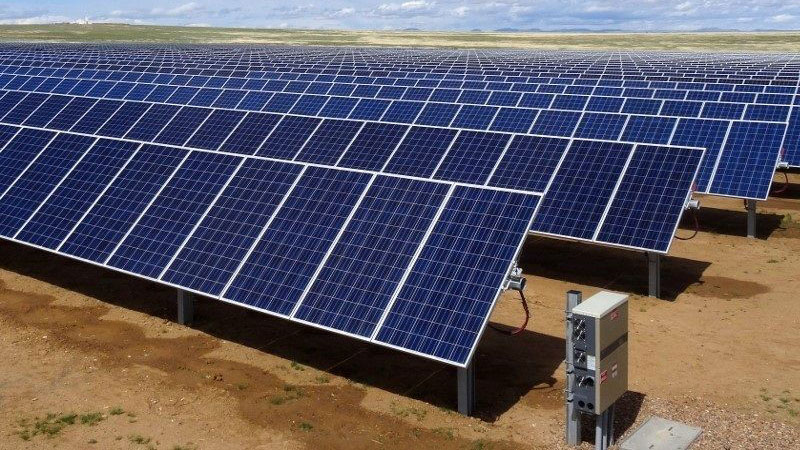[OPINION] The future of renewable energy is playing out in West Texas

Click here to read at HoustonChronicle.com.
As the threat of COVID-19 subsides in the United States, the Biden administration is launching energy and land policies that have far-reaching economic, social and environmental implications. These new policies seek to reduce net greenhouse gas emissions to 50 percent of 2005 levels by 2030 and protect 30 percent of U.S. lands and ocean territories by 2030. In both cases, the potential is promising, but the political and practical obstacles are daunting.
Achieving the Biden administration’s climate and land and ocean protection goals presents a complex challenge that requires policymakers to think about potential negative environmental and social consequences. At the same time, they need to consider the reality that our economy depends on a predictable, affordable source of electricity for everybody. In West Texas, the national-scale discussions about transitioning to renewable energy sources are playing out on the ground.
These new policies will likely have a disproportionate impact on rural communities in the United States. Because wind and solar energy requires more land per kilowatt-hour to generate than traditional, natural gas turbines, larger tracts of land only available in rural areas will be needed. Large wind turbines or acres of solar panels are not suitable for installation in downtown urban areas. But while renewable energy has a larger land footprint, it has greater siting flexibility given the breath of the resource — there are a lot of places with suitable wind or solar potential.
Given the long distances between rural electricity sources and the urban areas that will use the electricity, some estimates predict we will need thousands of miles of new transmission lines, impacting more communities and requiring more land. Rural communities are concerned that the Biden protection targets could usurp private land rights. But instead of being a problem, these targets could provide additional income to farmers and ranchers across the United States. Working lands — the nation’s farms, ranches and forestlands — can and do produce much more than the obvious commodities.
Owners of the nation’s working lands preserve communities’ rural heritage and provide “environmental goods,” including cleaner air and water and fish and wildlife habitat. However, many landowners receive little financial benefit in exchange for the value their lands provide. Easements and other payments for ecosystem service programs could provide the mechanism to compensate landowners for the comprehensive benefits they provide.
Nowhere do the issues of land needs, community values, energy development and potential rural/urban conflict intersect more than in the greater Big Bend and Trans-Pecos regions of Far West Texas, where oil and gas, wind and solar are projected to expand into what may be the most energy-intensive geographic region in the United States. Here, energy development is projected to expand into one of the most biologically diverse desert systems in the world. It’s in an expanse that consists mainly of rural communities and privately owned ranch land.
How then do we ensure energy policies balance energy development with the needs of biodiversity and the open spaces that define the character of this area?
The key will be authentic engagement with local communities to ensure outcomes are consistent with their wants, needs and values. In West Texas, a team of scientists and outreach professionals brought together private landowners, elected officials, energy companies, community members and others to develop a blueprint for producing energy while preserving the conservation values important to rural communities.
The hands-on landscape planning of the Respect Big Bend initiative changes the old story of development. By proactively considering potential impacts of projects before energy companies move toward implementation, we can preemptively identify disputes and solutions that avoid entirely the most problematic impacts and mitigate others. For example, we can encourage conservation by avoiding land areas with rare or critical features of West Texas ecosystems or areas of iconic natural vistas that draw recreating visitors to the region.
The Nature Conservancy has used a similar approach in the desert southwest to accelerate utility-scale solar energy development on public lands. In partnership with the U.S. Bureau of Land Management, the process identified 19 solar energy development zones, as well as areas designated as off-limits for development. This approach has cut project permitting time from an average of 18 to 24 months down to 10.
This bright spot in West Texas can serve as a model for balancing energy and land development elsewhere. Especially in other rural areas to solve the energy puzzle in ways that protect their biodiversity, communities and landowners for the long-term.
As the old saying goes, plans without blueprints are just dreams. If we as a nation are serious about implementing the sweeping changes that Biden has outlined, then local communities need to be part of a comprehensive planning process. The Respect Big Bend initiative showed us how to succeed by design rather than fail by default.
Kiesecker is lead scientist and director of Development by Design, The Nature Conservancy, a partner of the Respect Big Bend Coalition. Young is a senior research scientist at the University of Texas at Austin, also a partner of the Respect Big Bend Coalition.

NEWS
Hide Full Index
Show Full Index
View All News